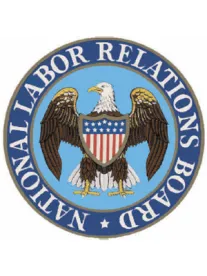One of the matters of significance to employers and unions under the National Labor Relations Act that became a point of contention under the National Labor Relations Board (“NLRB” or “Board”) during the Obama Administration was the movement to allow representation elections in what were commonly referred to as “micro-units,” which many believed made it easier for unions to score victories and gain bargaining rights. The Board’s recent decision in Boeing Co. and International Association of Machinists and Aerospace Workers provides important guidance for employers regarding how the Board will assess the appropriateness of proposed bargaining units going forward, and is evidence of the NLRB’s repudiation of Specialty Healthcare.
The case came before the Board after the International Association of Machinists and Aerospace Engineers (the “IAM”) filed a representation petition to represent a bargaining unit that included certain Boeing aircraft engineers but excluded production and maintenance employees at the company’s South Carolina plant, a non-union facility. The NLRB Regional Director determined that the proposed bargaining unit was appropriate, directed an election and then certified the Union after its election win. In a split decision issued on September 9, 2019, the Board reversed the Regional Director’s approval of the petitioned-for unit, vacated the certification of the Union, and dismissed the petition. Explaining that the Regional Director had misapplied the PCC Structurals standard for evaluating the appropriateness of a petitioned-for unit, the Board’s Republican-appointed majority adopted a three-part test for analyzing the scope of proposed bargaining units under the traditional community-of-interest standard.
How We Got Here
The new three-part test is the latest evolution in the Board’s method for determining whether a petitioned-for unit is appropriate. In 2011, the Board upended nearly 20 years of precedent when it held in Specialty Healthcare that a petitioned-for unit would be appropriate unless the employees inside and outside the proposed unit share “an overwhelming community of interest.” After Specialty Healthcare, Employers challenging the scope of a petitioned-for unit were tasked with the heavy burden of proving that the interests of excluded employees overlap almost completely with those in the unit proposed by the union.
Affording such extraordinary deference to the union’s proposed unit increased the risk of fractured bargaining units—otherwise known as “micro-units”—that frustrated employers, ignored the substantial interests and rights of excluded employees under the National Labor Relations Act, and often defied well-established industry norms. In 2017, the Board remedied these problematic results when it decided PCC Structurals, which overturned Specialty Healthcare and restored the traditional community-of-interest test the Board had previously applied. Under PCC Structurals, when an employer challenges the appropriateness of a petitioned-for unit, the Board must consider:
[W]hether the employees are organized into separate departments; have district skills and training; have distinct job functions and perform distinct work, including inquiry into the amount and type of job overlap between job classifications; are functionally integrated with the Employer’s other employees; have frequent contact with other employees; interchange with other employees; have distinct terms and conditions of employment and are separately supervised.
If after weighing these factors—a fact-based, case-by-case inquiry—the Board determines that excluded employees also share a community of interest with the petitioned-for unit, it will conclude that the petitioned-for unit is inappropriate due to the exclusion of employees with a shared community of interest and will not allow bargaining in such unit.
Although PCC Structurals is clear that both the shared and distinct interests of the employees included and excluded from the petitioned-for unit will be considered, the Board majority in Boeing acknowledged that there has been little clarity as to how those shared and distinct interests should be weighed.
The Boeing Case
Boeing operates a commercial 787 aircraft facility in North Charleston, S.C. For several years, the IAM had tried unsuccessfully to organize the approximately 2,700 production-and-maintenance employees who work at the facility. In its third attempt, the IAM successfully petitioned for an election involving a proposed bargaining unit consisting of only two employee classifications: Flight-Line Readiness Technicians (“FRTs”) and Flight-Line Readiness Technician Inspectors (“FRTIs”). Though the FRTs and FRTIs hold an additional license, receive higher pay, and work in a separate part of the North Charleston facility, these approximately 178 employees are in the same department and have meaningful similarities in their job functions as the other production and maintenance employees. Nonetheless, the Regional Director for the Board’s Atlanta Regional Office concluded that the Union’s petitioned-for unit excluding the production and maintenance employees was an appropriate unit under PCC Structurals. After the Union won an election among the FRTs and FRTIs, Boeing filed a request for review and the Board reversed.
The Three-Part Test
In disagreeing with the Regional Director’s decision, the majority noted that the community-of-interest analysis requires consideration of not only the shared interests of the employees in the petitioned-for unit, but also whether those shared interests are sufficiently distinct from the interests of employees excluded from the proposed unit. To facilitate future agency decisions, the Board announced a three-step process for analyzing challenges to the scope of proposed bargaining units under the PCC Structurals community-of-interest standard.
Under the Boeing decision, the NLRB will now consider whether:
-
The employees in the proposed unit share a community of interest;
-
The workers excluded from the unit “have meaningfully distinct interests in the context of collective bargaining that outweigh similarities” with the employees in the proposed unit; and
-
There are already Board-established guidelines for determining an appropriate unit configuration for the employer’s industry.
The Board applied this three-step test and found that the FRTs and FRTIs themselves had interests that were too disparate to show that the two classifications shared a community of interest. Moreover, the majority held that the excluded production-and-maintenance employees generally had the same interests as FRTs and FRTIs in the context of collective bargaining, and therefore the interests of employees in the petitioned-for unit were not sufficiently distinct from the interests of excluded employees to allow a unit of only FRTs and FRTIs. The NLRB also noted the absence of any existing industry-specific guidelines applicable to Boeing’s operations.
The Board’s Commentary on Wall-to-Wall Units
In addition to providing and applying the new three-part test, the Board recognized prior NLRB precedent finding plant-wide or wall-to-wall units to be presumptively appropriate for integrated manufacturing facilities. However, the presumption does not mean that less-than-plant-wide units at functionally integrated facilities are inappropriate, nor does it place a heightened burden on unions seeking to organize smaller units at such locations. Rather, functional integration is only one factor in the community-of-interest analysis.
What Happens Next?
The Boeing decision supplies much-needed guidance as to how the NLRB will analyze the appropriateness of petitioned-for units. The Board’s clarified standard provides employers with a means for challenging the appropriateness of petitioned-for bargaining units of a limited number of classifications and/or defined solely by the extent of organizing, and potentially reduces the potential for proliferation of fractured units that exclude arbitrary portions of an employer’s workforce at a facility. Rather than force employers to expend significant time and resources in after-the-fact challenges to Regional Director directions of elections in micro or other units that may be composed of gerrymandered groups of employees or units that actually represent no more than the extent of organizing, the Board’s decision in Boeing affords better opportunities for employers to resolve unit appropriateness prior to elections taking place.






 />i
/>i

